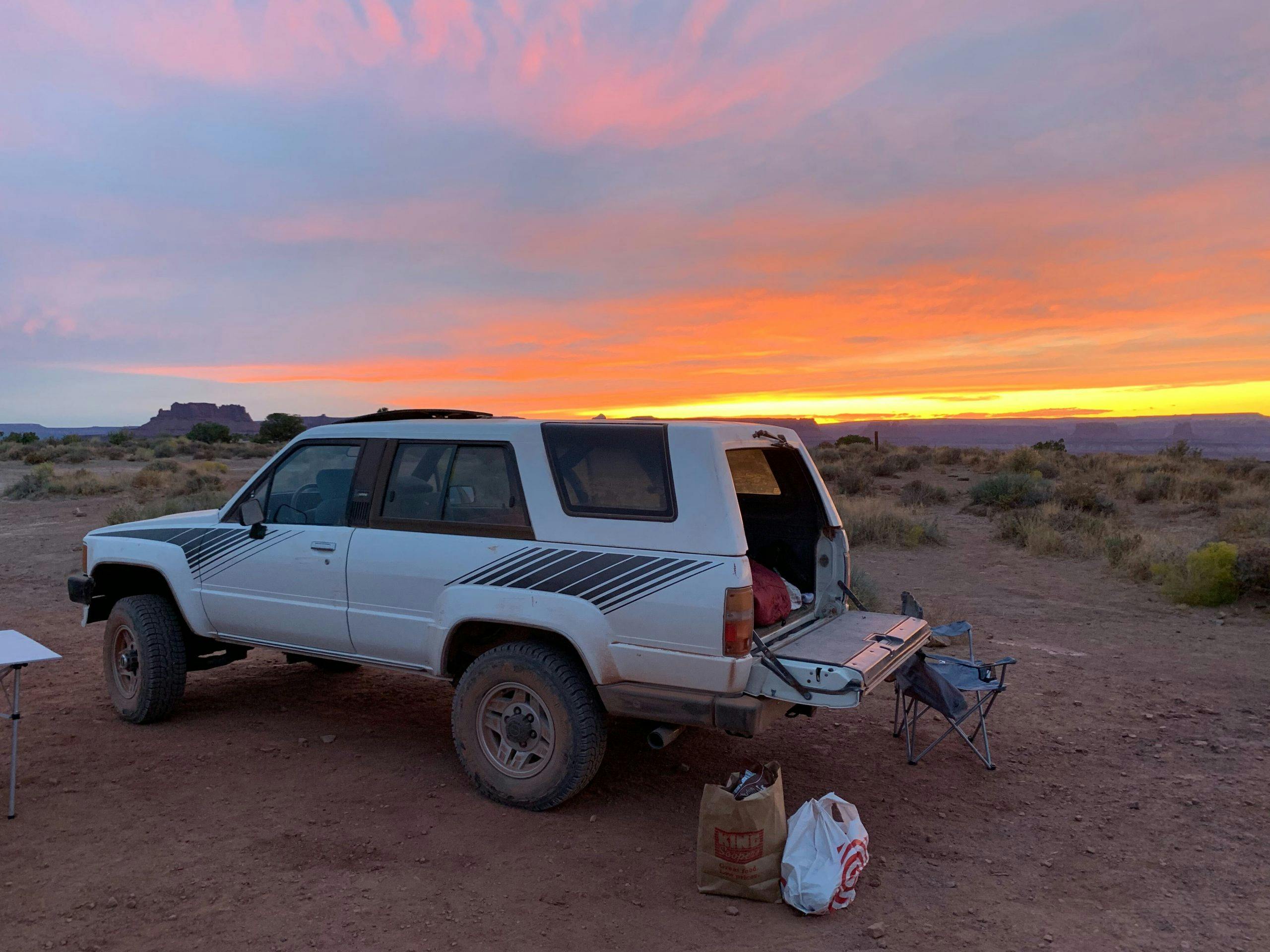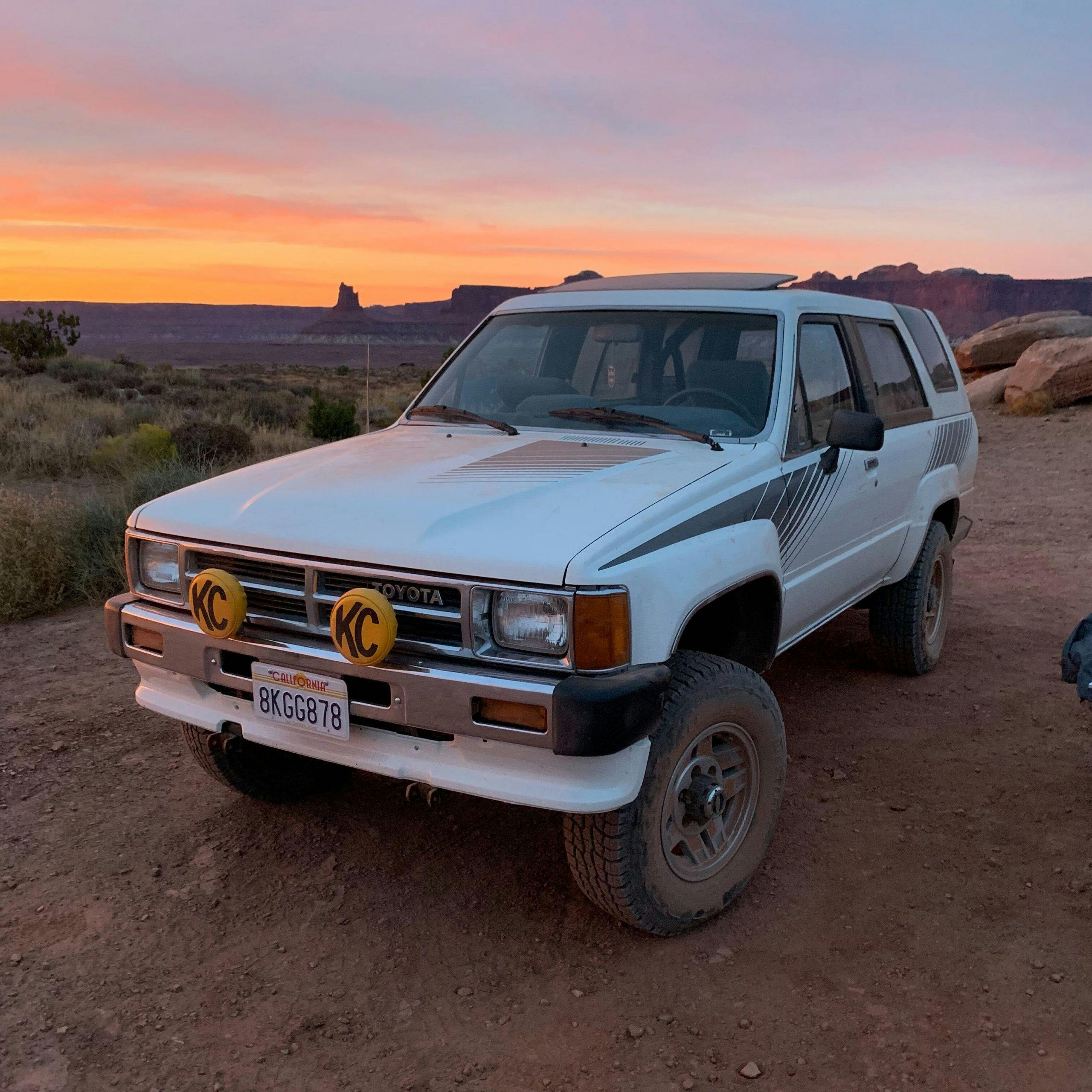Media | Articles
The 1984–89 Toyota 4Runner is riding high

In the immortal words of Jacobim Mugatu: 4Runner, so hot right now. 1984–89 4Runners (N60 for those fluent in Toyota generation codes) are climbing in value, with a 30 percent average increase in the most recent update of the Hagerty Price Guide, which is published every four months.
This jump in value ranked in the top 20 for increases among all vehicles, and it ranked second among trucks and SUVs, behind the 1978–1979 Ford Bronco. Every model year, trim, and engine combination for the N60 Toyota 4Runner increased in value, but the 4Runner Turbo performed best, with a 41 percent bump cross all condition ratings.
The N60 was the first generation of Toyota’s 4Runner, and it saw several changes over its six-year run. The model started production in 1984 with a carbureted 2.4-liter 22R inline-four driving all four wheels through solid front and rear axles. A year later, the 116-hp 22R-E, a fuel injected version of the 22R with 16 percent more power, was offered as an option. In 1986, the 4Runner added a Hi-Trac independent front suspension, which increased the track width by three inches, improving on-road stability while sacrificing off-road articulation. The independent suspension also freed up room in the engine bay, allowing for a 150-hp, 3.0-liter V-6 in 1987.

Values for different model-year 4Runners don’t vary much, perhaps in part because each 4Runner has traits that can me more appealing to certain groups. Enthusiasts wanting to build a rock-crawler might prefer an ’85 4Runner, the last year for a solid front axle and the first year for the 22R-E. For two years only (1986 to 1987), a 135-hp Turbo 22R-TE was offered, which is are highly desirable to 4Runner aficionados. Turbos currently carry a 12 percent premium over a standard 22R-E, but this premium is likely to rise as the 4Runner gains popularity among collectors.
Hagerty Motorsports Manager Logan Calkins has owned several 4Runners of all generations, but he keeps coming back to the N60. He currently owns a white 1987 4Runner 22R-E. “All 4Runner generations have something unique, but the first for sure is the coolest,” he says. “I mean, the top comes off!” Calkins is confident the 22R-E was the right call: “The 22R is one of the most reliable engine families ever built.”
Marketplace
Buy and sell classics with confidence
The 4Runner is still an affordable classic, even with the significant value increase. Most #3-condition (Good) 4Runners are around $10,000, while the best examples for sale are worth around $30,000. The 4Runner’s reliability, utility, and affordability are a likely reason why it is so popular among millennials. Using Hagerty insurance quotes as a sign of buying interest, 47 percent of current first-gen 4Runner quotes come from millennials, while Gen-X (born 1965-1981) accounts for 38 percent. Due to their age, millennials are often in a transitional period in their lives and lack room, both physically and financially, for cars that don’t serve multiple purposes. The 4Runner can be used for occasional trips to work, weekend outings with friends, off-roading, camping and so on.
Logan has experienced this phenomenon first-hand. “It’s funny,” he says, “everyone I encounter in the car hobby that is under 55 years old goes nuts over my 4Runner, while everyone older doesn’t really get it.” Like most collectibles, nostalgia is a big influence. “The 4Runner is so iconic for the era. When I was in high school in California (Class of ’02) this was the truck of choice and ‘all the cool kids drove them.’ They were just as capable as they were dependable.”
If you’re in the market for a first-gen 4Runner, keep in mind that clean, original examples are hard to find. Off-road mods were popular for these vehicles, and like any older car, rust is a major issue for examples residing in certain parts of the country. Condition has a much larger influence on value than mileage. Many 4Runners with over 200,000 miles will sell above #3-condition (Good) values. 4Runners in #3 condition are worth 130 percent more than examples in #4 (Fair) condition. If you find a clean N60 4Runner, you won’t be disappointed. The SUV has so many benefits—top down motoring, room for five, and serious off-road chops—that we expect it’ll remain in high demand.















I have a 1987 Toyota 4-Runner that needs a lot of work. Bodywork including new paint, new tires, back window repair, a potential replacement of a throw-out bearing, and radio needs repair (amplifier?). The engine was replaced in 1997 and the vehicle has around 179k miles registered on it. I am curious what you think the value of this car would be as-is..verus repairing it for better profits.
the
You will get a good idea to your 4Runner’s value here: https://www.hagerty.com/valuation-tools/toyota/4runner/1987/1987-toyota-4runner
I custom ordered my 1988 1st Generation and I still have it. It looks better than the day I bought it. I love my 4Runner!!